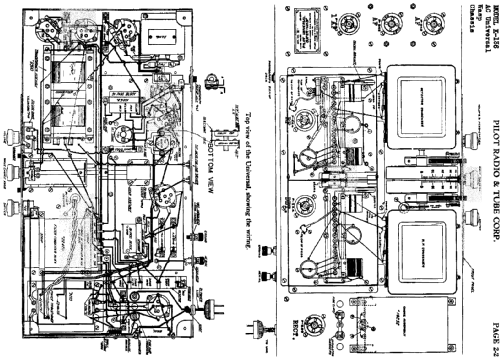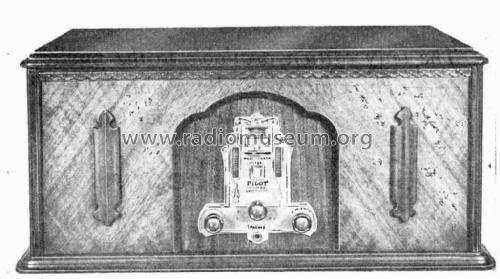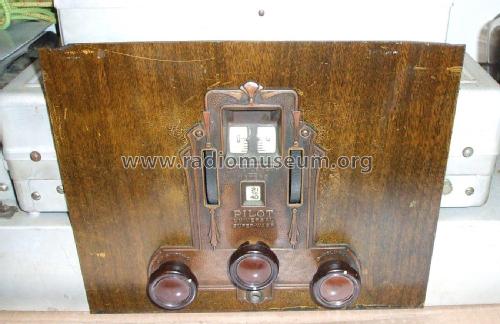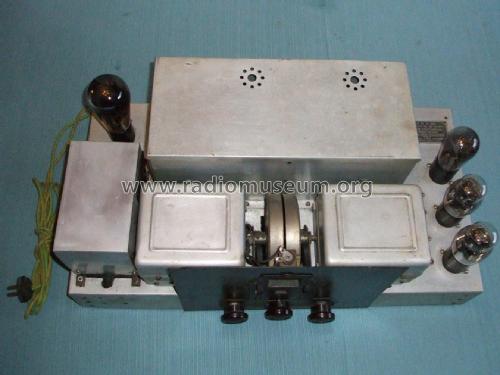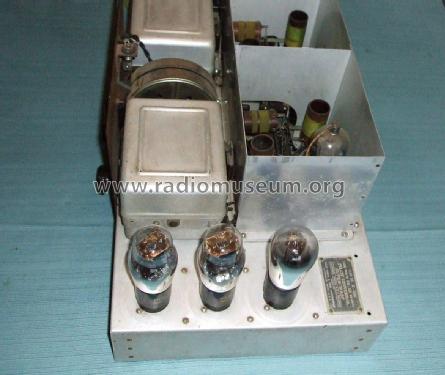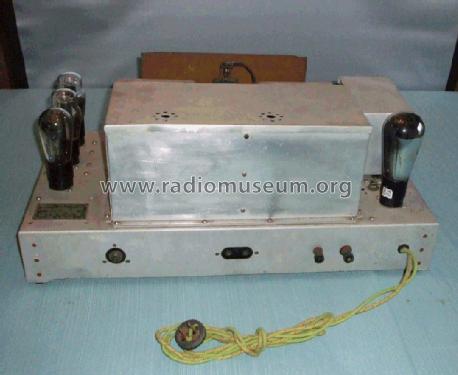Universal Super Wasp K-136
Pilot Electric Mfg. Co. (Radio Corp.); Brooklyn (NY)
- País
- Estados Unidos
- Fabricante / Marca
- Pilot Electric Mfg. Co. (Radio Corp.); Brooklyn (NY)
- Año
- 1931
- Categoría
- Radio - o Sintonizador pasado WW2
- Radiomuseum.org ID
- 51968
-
- alternative name: Pilot Radio & Television || Pilot Radio and Tube || Pilot Radio Corporation
Haga clic en la miniatura esquemática para solicitarlo como documento gratuito.
- Numero de valvulas
- 6
- Principio principal
- RFS con reacción (regenerativo); Screengrid 1926-1935
- Número de circuitos sintonía
- 2 Circuíto(s) AM
- Gama de ondas
- OM y más de dos OC
- Tensión de funcionamiento
- Red: Corriente alterna (CA, Inglés = AC) / 110 Volt
- Altavoz
- - Este modelo usa altavoz exterior (1 o más).
- Material
- Madera
- de Radiomuseum.org
- Modelo: Universal Super Wasp K-136 - Pilot Electric Mfg. Co. Radio
- Forma
- Sobremesa, caja, normalmente con tapa (panel no inclinado).
- Anotaciones
-
Released in September 1929, the AC Super Wasp was the first AC operated shortwave receiver and achieved phenomenal sales throughout the world. Following on this success the company desired to design a radio to capture the more mature listener who did not want to change coils when changing bands and have a nice piece of furniture in the sitting room.
To achieve this the company listed these design features;
- No Plug-in coils, all band shifting from the front panel.
- Tuning to go from 15 to 550 metres. Taking in the regular broadcasting band.
- The detector regeneration control must not affect the tuning to any appreciable degree.
- The power pack must be part of the chassis.
- Employ the tuned screen-grid RF stage as per the AC Super Wasp.
- State of the art, for 1931, audio stage. Push Pull for dynamic speaker.
- Phono connections available.
- Must be worthy of being used in the living room with a nice cabinet.
- Must be in kit form for easy home assembly.
- The price must be reasonable.
John Geloso, Chief Engineer designed the mechanical band switching mechanism and David Grimes, Research Chief, assisted by Edgar Messing completed the electrical.
There is very detailed article on this radio in Radio Design, Vol. 3, No. 4, 1931, by Robert Hertzberg.
Priced at $85 in kit form in 1931.
- Precio durante el primer año
- 85.00 USD
- Ext. procedencia de los datos
- Ernst Erb
- Procedencia de los datos
- Radio Collector`s Guide 1921-1932
- Referencia esquema
- Rider's Perpetual, Volume 2 = 1932 (Models 1931/1932)
- Documentación / Esquemas (1)
- Short Wave Radio Manual 1934
- Documentación / Esquemas (2)
- Electronics Australia, January 1990, Page 168
- Documentación / Esquemas (3)
- Radio Design, Vol. 3, No. 4, 1931
- Otros modelos
-
Donde encontrará 544 modelos, 273 con imágenes y 412 con esquemas.
Ir al listado general de Pilot Electric Mfg. Co. (Radio Corp.); Brooklyn (NY)
Colecciones
El modelo Universal Super Wasp es parte de las colecciones de los siguientes miembros.
Literatura
El modelo Universal Super Wasp está documentado en la siguiente literatura.

